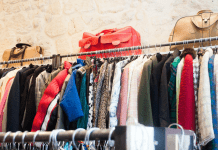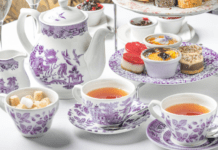 Sudden infant death syndrome — often known as “SIDS” — is a term to describe the sudden, unexplained death of an infant up to 12 months old. Although no one knows the cause of SIDS, you and others who care for your baby can reduce the risk of sudden death and ensure safe sleep for your baby by following these tips:
Sudden infant death syndrome — often known as “SIDS” — is a term to describe the sudden, unexplained death of an infant up to 12 months old. Although no one knows the cause of SIDS, you and others who care for your baby can reduce the risk of sudden death and ensure safe sleep for your baby by following these tips:
This post is brought to you by our partners at Children’s Hospital at Erlanger.
- Always place babies on their backs to sleep. Babies who sleep on their backs are much less likely to die of SIDS than babies who sleep on their stomachs. Use the back sleep position both for naps and at night.
- Place your baby on a firm sleep surface, such as a safety-approved crib mattress, covered by a fitted sheet. Never place your baby to sleep on pillows, quilts, sheepskins, or other soft surfaces.
- Keep soft objects, toys, and loose bedding out of your baby’s sleep area. Don’t use pillows, blankets, quilts, sheepskins, and pillow-like crib bumpers in your baby’s sleep area. Keep any other items away from your baby’s face.
- Do not allow smoking around your baby. Don’t smoke before or after the birth of your baby, and don’t let others smoke around your baby.
- Keep your baby’s sleep area close to, but separate from, where you and others sleep. Your baby should not sleep in a bed or on a couch or armchair with adults or other children, but he or she can sleep in the same room as you. If you bring the baby into bed with you to breastfeed, put him or her back in a separate sleep area, such as a bassinet, crib, or cradle, when finished.
- Do not let your baby overheat during sleep. Dress your baby in light sleep clothing, and keep the room at a temperature that is comfortable for an adult.
- Reduce the chance that flat spots will develop on your baby’s head. Provide “tummy time” when your baby is awake and someone is watching; change the direction in which your baby lies in the crib from one week to the next; and avoid too much time in car seats, carriers, and bouncers.
- A safe crib is the best place for your baby to sleep. Make sure your crib doesn’t have missing or broken hardware, cut-out designs in the headboard or footboard, slats more than 2 and 3/8″ apart, or corner posts over 1/16″ high.
- Do not use a nursing pillow as a sleep aid. While nursing pillows provide comfort and support during breastfeeding, they should not be used as a sleeping surface for your baby. Letting your baby sleep on a nursing pillow may seem like a good idea, but it is dangerous.
Andrea Goins, DO, sees patients at Children’s Hospital at Erlanger and Erlanger East Hospital. For more information or to schedule an appointment, please call 423-778-2564.















